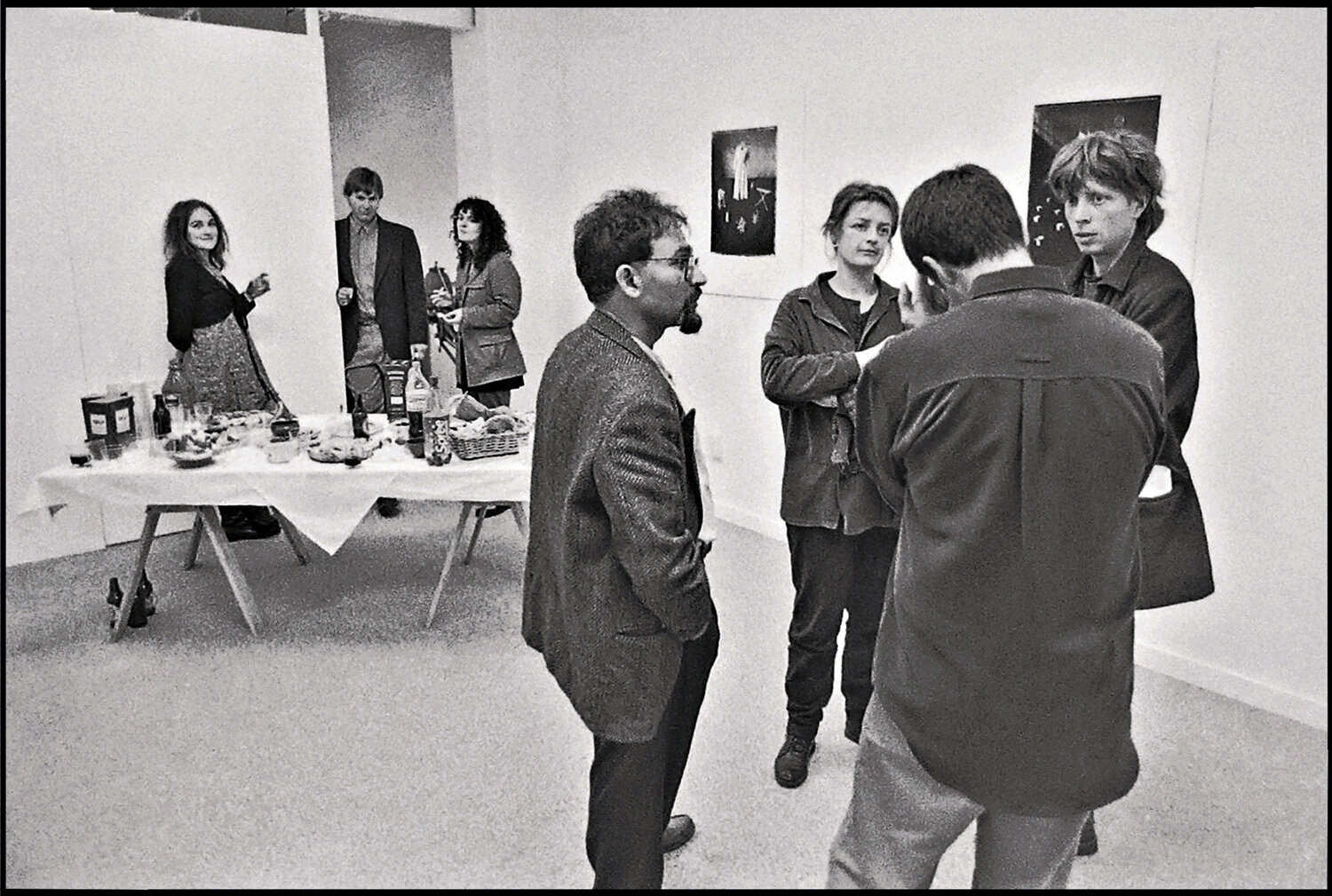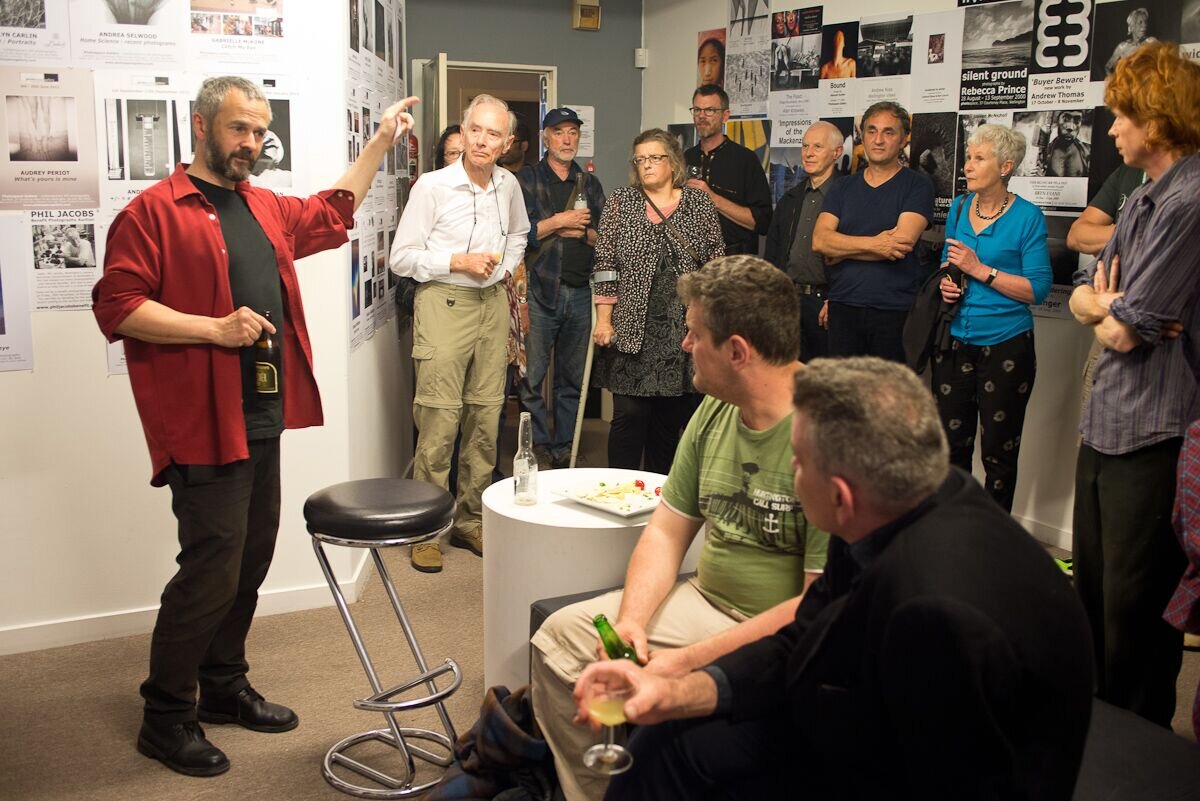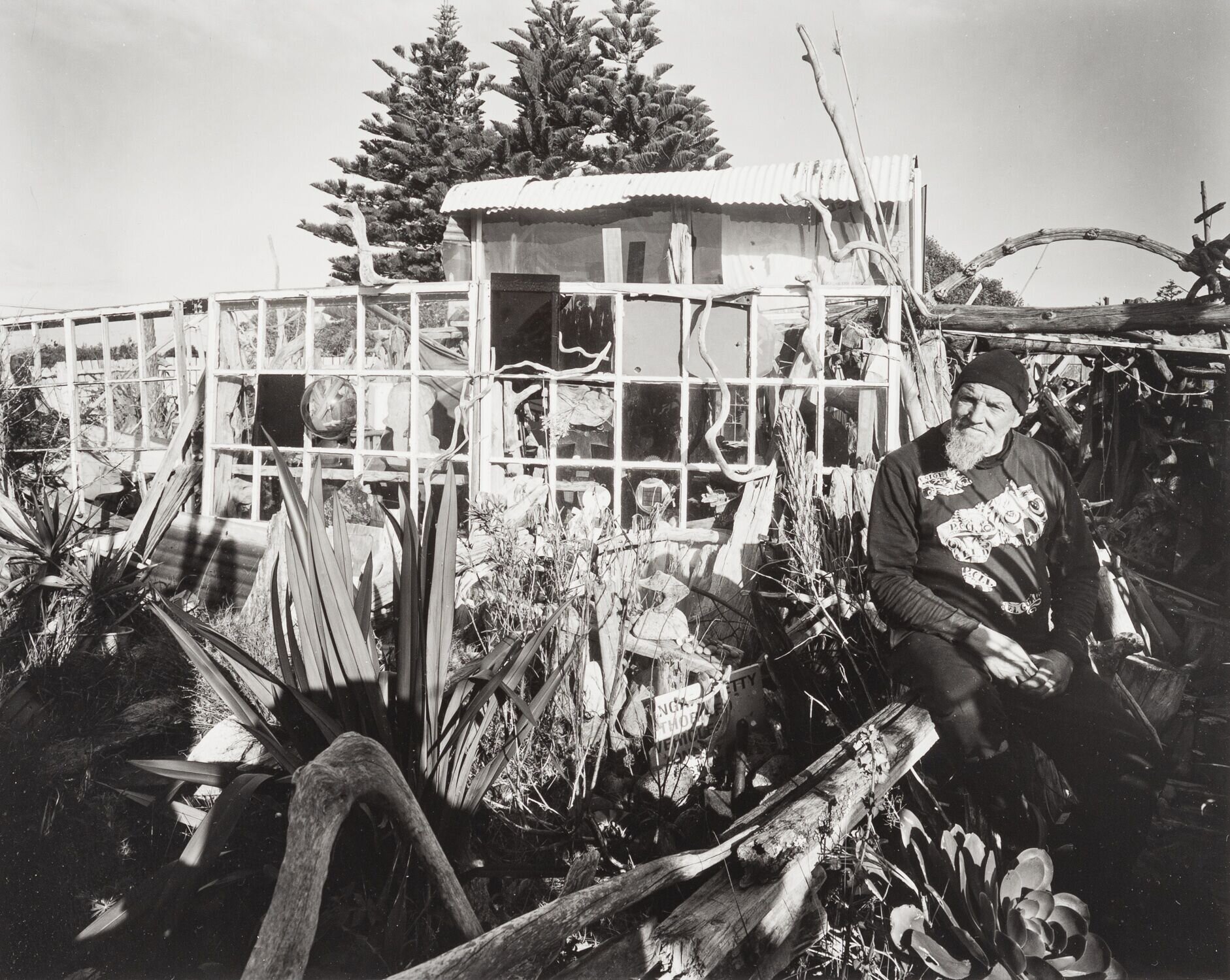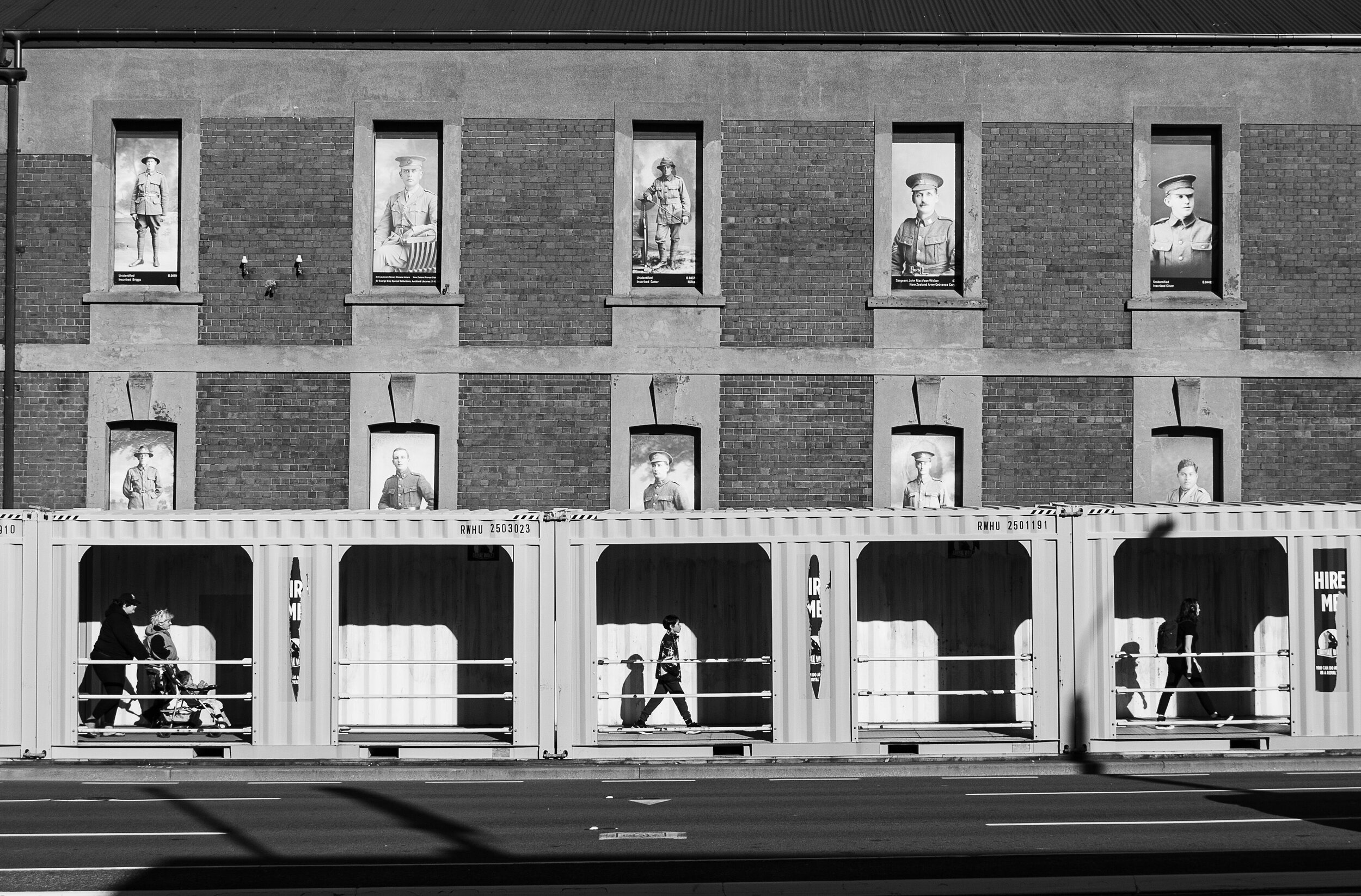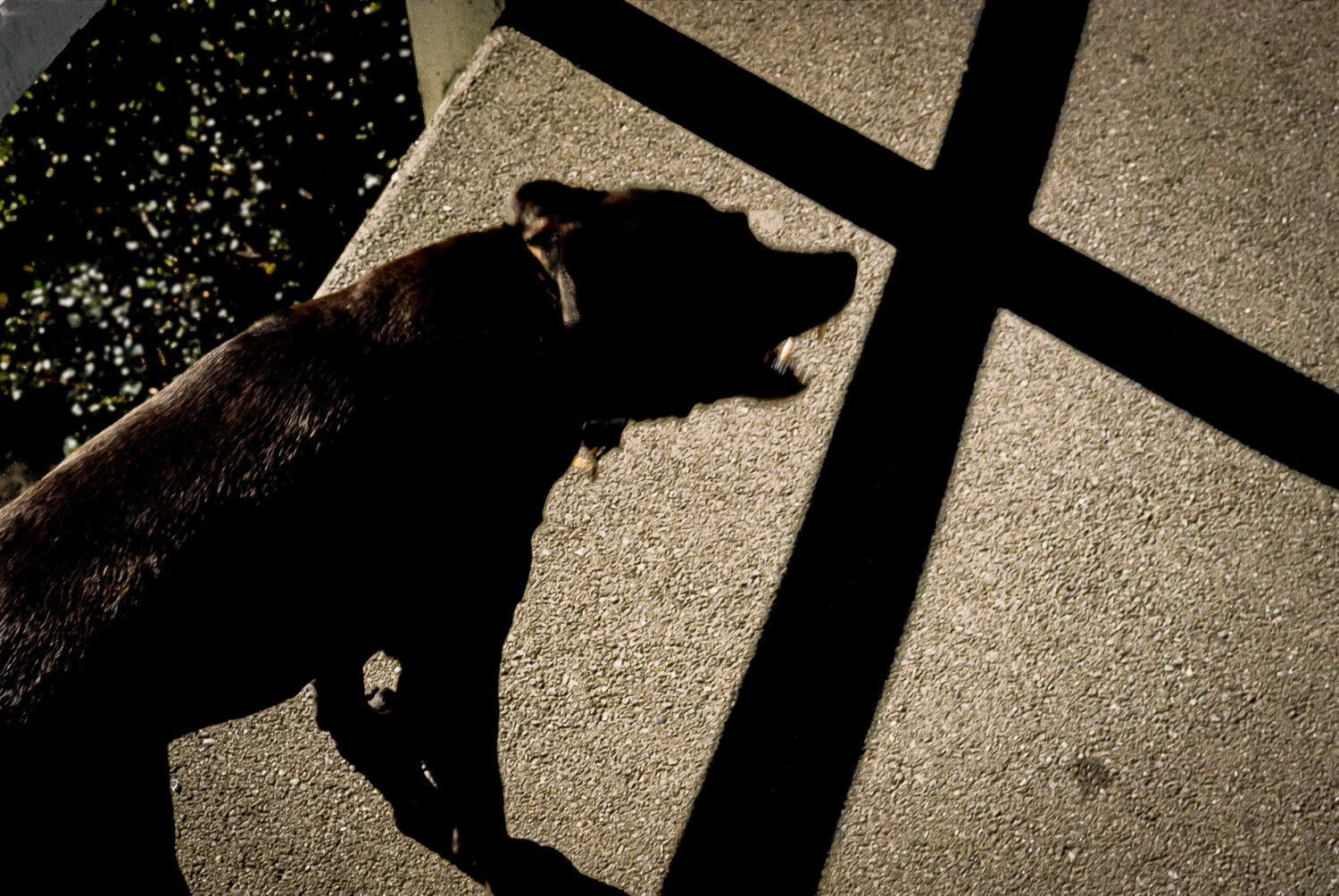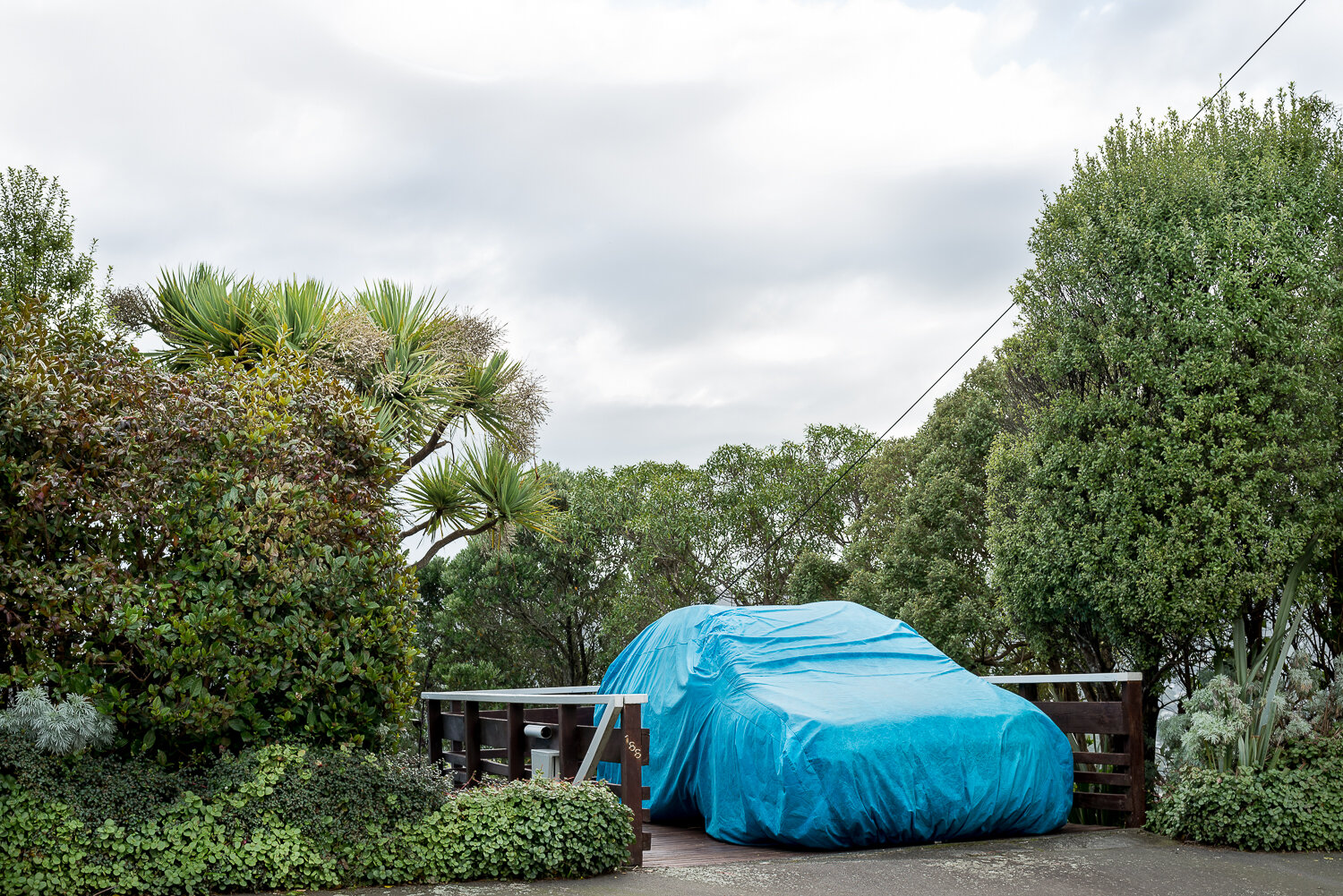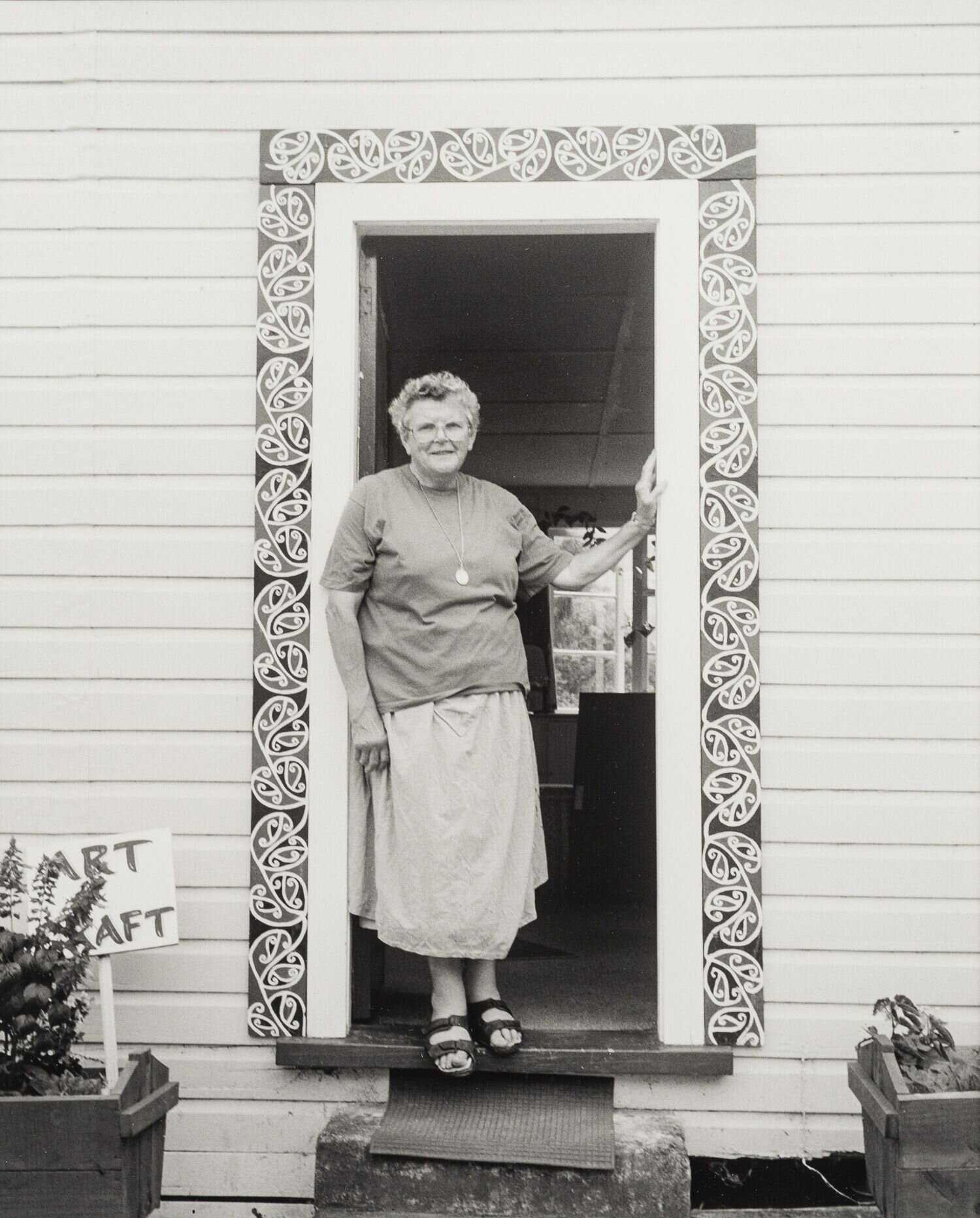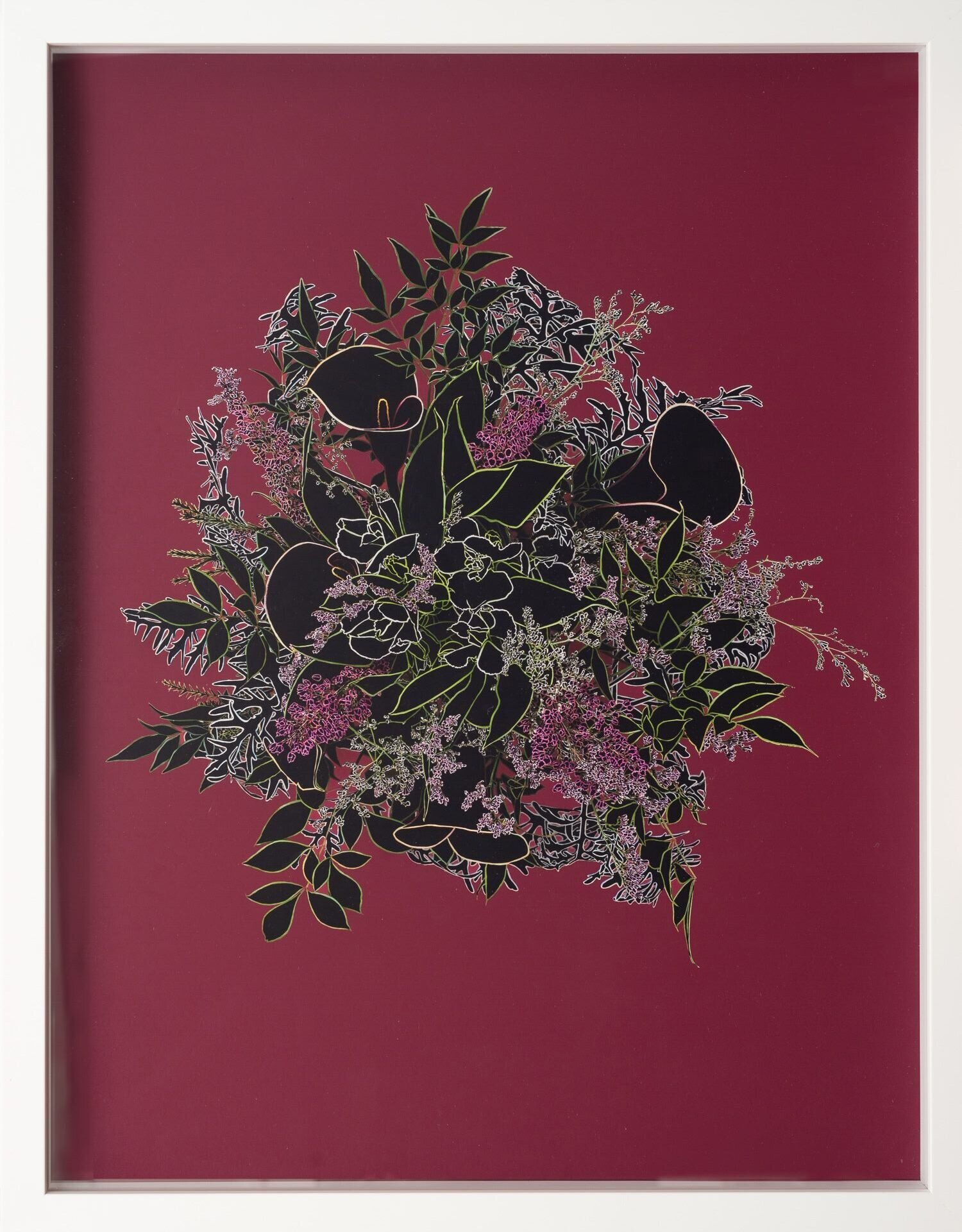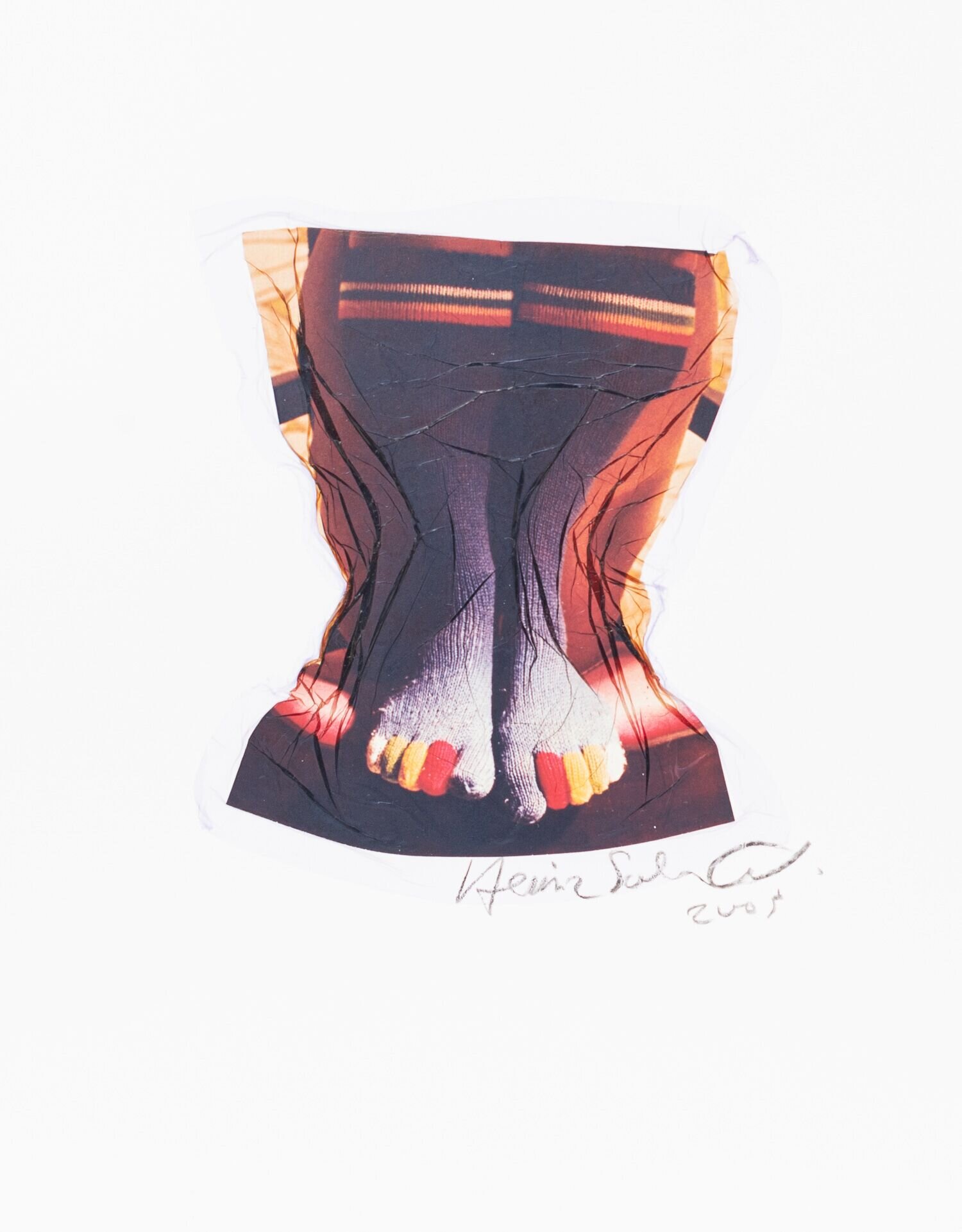Photospace Gallery turns 21 - interview
Photospace 21st birthday group exhibition: Mark Beehre, Peter Black, Kerry-Ann Boyle, Lisa Clunie, Siren Deluxe, James Gilberd, Alannah Gunter, Su Hendeles, Karen Lee, Mary Macpherson, Mark Marriott, Lucien Rizos, Andrew Ross, Cathy Tuato'o Ross, Heinz Sobiecki, Ellen Smith, Christine Szabados, Julian Ward, Hans Weston, John Williams, Alan Wylde.
6 December 2019 – 25 January 2020
Interview with James Gilberd, Photospace Director
By Mary Macpherson for PhotoForum
On Friday 10 December, 1998, James Gilberd opened Wellington’s Photospace Gallery with the exhibition ‘The Mortal Dress' by Auckland artist Kerry-Ann Boyle. On the occasion of its 21st birthday exhibition, with 21 long term exhibitors, I talked with Director James Gilberd about what it’s been like managing New Zealand’s longest running gallery dedicated to photography.
Twenty-one years of running an art gallery is pretty impressive and being a gallery devoted to photography, doubles the achievement. Why did you start Photospace gallery?
There was a need for it, which I identified from Fotofest 1998 – a major, one-off festival of photography in Wellington in early 1998. Photographers, except for an established minority, were unable to access dealer galleries and were showing their work in cafes, hotel lobbies, libraries and other places with far from optimal hanging, lighting and viewing conditions, and limited access. I had a few shows in cafes myself, which was nice but there were difficulties to overcome. The gallery was established to serve a community of photographers and help build and expand interest in the medium.
Who was James Gilberd before Photospace Gallery?
I was 35 in 1998 when Photospace was born. I'd done a year's professional photography course at Wellington Polytechnic in 1987 (the course William Main established in the 70s) and a degree in design, photography major, at the same institution. I never much fancied the world of commercial photography, though I've halfway ended up in it. I avoided working for agencies and chasing big-budget clients, regarding that world as both a bit soulless and a bit cutthroat.
I was also a musician, and still am, playing drums in two bands; Kosmo-0 (more guitar effects pedals than you can shake a drumstick at) and Condenser (a new post-punk band formed with a former band-mate from 1980-84). I played professionally for a couple of years (though my drumming was never up to pro level) in the mid-80s which provided enough money and spare daytime to get started in photography, and I continued to play paid gigs part-time until Photospace took over. I also worked in photographic retail from the late 80s through 90s, which I enjoyed, but the money was a bit rubbish.
Display of previous exhibition posters, 2013
Although you’ve shown painting and other media through the Gilberd Marriott Gallery brand, you’ve focused primarily on photography. Why did you decide to specialise in photography?
I'd completed five years of tertiary education, four of them specifically in photography, which helped give me the depth of appreciation for the medium, and - more important - the self-confidence to make such a move. Also, I didn't know much about art outside of photography so was never going to start a general art gallery, of which there were already plenty in Wellington anyway. Up to a couple of years after opening the gallery, I could still feel I was being observed - eyes boring in to the back of my neck - by people who maybe thought it was a small storm in a teacup and would soon dry up and blow away. But it didn't.
The Gilberd Marriott opening late 2008 and came about through contacts built up at Photospace - artists who wanted to exhibit here but who weren't photographers - and I've learned more about other mediums principally from my wife Denise Durkin, who is a full time artist and art teacher. The idea was to attract a wider range of gallery visitors than just those who haunt photography galleries. And to try to generate a bit more income.
Did you have any idea of how hard running a photography gallery would be?
Yes. I looked at the history of photography galleries in New Zealand and knew the market for photographs as artworks barely existed here. Last century, you could count the serious local collectors on your fingers. The market has not developed as much as I expected, despite all the hype over the decades. Outside the circle that will visit this website, few regard photography as an art medium and fewer still would consider purchasing a photograph taken by someone else for their wall at home. You still get comments like "$300? That's a lot for a photograph." Thankfully most of the gallery sales are in four-figure sums these days.
What’s kept you hanging in there over the years? Where has your strength come from?
Refusal to admit defeat, pride, stubbornness, pig-headedness - whatever you want to call it. But really more from the emotional and practical support of family, friends, and the community that has grown around the gallery. (Genetically, there's a family history of business-owning and entrepreneurship on the Gilberd side, and ruthless plotting, scheming and achieving your aims by any means on the Campbell side. I have a 16th-17th century ancestor who was not unlike Macbeth. Sometimes channelling him has been useful.)
Many dealer galleries have a stable of artists which, although they may change over time, are a core of practitioners the gallery represents. I’ve always felt your practice was broader and more eclectic than that – what’s your philosophy about who you show and the artists you have long term relationships with?
I haven't thought about this enough to call it a philosophy, things have just evolved. I've never seen myself as an art dealer, though; I dislike the very term. Gallerist is maybe a better one. The 21 people whose works are in the 21st birthday group exhibition, opening 6th December, are representative of the core of exhibitors but still an eclectic group. During the inaugural exhibition opening a young guy rocked up to me and asked, somewhat confrontationally, "Are you always going to show work like this?" I was a little flummoxed and can't recall the reply I stammered out, and his question lurks in the back of my mind. Perhaps, "No. But in some ways, yes."
Do you see Photospace as a place where people new to exhibiting can get a start?
Absolutely. Following Fotofest 1998, I saw there was a large gap in the market left by Bill Main's Exposures Gallery that closed a few years earlier (Actually, Bill has been my neighbour since the 1960s. You could call out from his house down to mine, if the Burma Road traffic didn't drown you out.) I was much more interested in finding new photographers and giving them a leg-up. If an artist/gallerist relationship develops from that, all the better. I'm going to name-drop Ben Cauchi, who showed at Photospace in 2000 and 2002 and has gone on to great things.
Are there other galleries or dealers you’ve admired or have been models for you?
I've already mentioned Exposures Gallery. The late Peter McLeavey was an important influence and erstwhile mentor. I talked to him before opening the gallery and his two main pieces of advice have stuck: "This is the right time to start a photography gallery, so just do it. You don't have to go to gallery school or anything, just learn as you go, on the job." The other one I was unable to heed; "At some point you're going to have to choose between running a gallery and being a photographer." He was right, though. The cost of not dedicating myself 100% to the gallery is I can't do it nearly as well as I'd like to, or as it deserves to be done. But I'm a pragmatist, and it’s my photography practice that sustains the gallery financially. Even a really sharp sales person couldn't make a living off a photography gallery in New Zealand (or so I like to think), and, not being independently wealthy the only model remaining is to put the costs of the gallery onto the exhibitors. This strategy goes against the grain for me, being fundamentally unfair.
The public funding model also has no appeal. The risks of that path have shown themselves many times, the latest case being The Pyramid Club - an alternative music venue in Wellington that is vital to an extensive community but has just had its funding cut off by CNZ. I don't want to be beholden to anyone or any organisation and I enjoy the freedom and independence of operating a self-financed business. It's far from invincible but the 21-year track record proves something.
Tell us about the best of times and the worst of times for Photospace gallery?
The 2008 calendar year was probably the height of the business's turnover, with the gallery earning nearly enough to stand on its own. I took out a lease on another large space in Dixon St to operate as a hire studio and I established, in partnership, an underground gallery space also in Dixon St. My collective rent and other monthly costs doubled – just as the Global Financial Crisis of 2008 hit. My hair changed from near-black to grey within about 18 months, but Photospace survived while some other, competing businesses sank without trace. 2009 till about 2012 was a tough period. In the last few years the gallery has performed very well sales-wise and things look good for the future.
The earthquake strengthening work in 2018 closed the gallery for a few months - the only break it’s had - and we came out of it with a higher ceiling and much-improved space, all for free, which has greatly improved the look and feel of the gallery.
The Peryer Archives, Wellington viewing - 50 vintage prints by Peter Peryer from the Bowerbank Ninow Gallery, 18-19 May 2018, after Photospace had been closed for several months for earthquake strengthening work.
Mark Beehre, Men Undressed, 2011
What drives the choice of artists that you show? Do you see any pattern to the photography that you choose to exhibit?
There is no house style. I like variety. The current objective style of colour photography that most graduates of photography degree programmes are producing is fine up to a point; I generally enjoy it but don't want to show work in that style all the time. Most of the galleries around the world that show the current hot photographers are putting the same-looking stuff on their walls. That approach bores me. They look over each other’s shoulders and follow trends of what sells, I guess.
I turn down some quite good artists if their work doesn't touch me in some way. There has to be an individual spirit present in the work, and people who are making work for genuine, personal reasons usually have that going on, even if their work is not quite fully developed and realised.[1] Some work leaves me cold, regardless of the status of its creator. All artwork is derivative to some degree, and that's fine and healthy, but many artists are simply bandwagon-jumpers; imitators just trying to make their mark however they can. Having done a photography degree and a fair amount of my own exhibition work, I understand the process and can see through the BS if it's there.
Also, because I'm sometimes not making any money out of the gallery, I have to want to work with the artist. If their personality and/or demands cause me to wake at 4am in a cold sweat then it's going to be a ‘No’. There are some very talented people around who are also, euphemistically, difficult. I'm happy to leave them to the other galleries.
How important is it that the work might have potential to sell?
It's nice to sell work. It benefits the photographer, the buyer and the gallery and is always a buzz. I've observed that most people who buy from here seem to make an emotional connection with the work. I don't get many people buying simply on name or to match their new interior design, thankfully. But some exhibition work is destined to not sell, and that doesn't mean I won't show it. Most dealer galleries have to show only potentially saleable work, which makes it hard for new artists to break in, but Photospace is geared towards helping people get started exhibiting and saleability not a major factor. Also, I've given up second-guessing what individual works might sell from an exhibition; I'm so often wrong about it.
You have a diverse business model with the gallery – studio for hire, darkroom, photography courses, passport photographs, and personal interests including playing in a band, the paranormal and writing. How much of that is the need for a business model that keeps you in the black, or is it you liking the stimulation of new things and being a bit of an entrepreneur?
Business-wise, it is all about fingers in pies. Wellington is a small city with a small market for all of the above, and by nature I'm not a specialist: quite the opposite. I came up with a business plan in 1996, as a requirement for a paper in my degree course, and that was realised a couple of years later. I've more-or-less stuck to it, and it's worked. No two days are the same here, there's little routine.
Personally, I need to keep my brain active or it tends to turn in on itself. I am cautious by nature and the idea of putting all my eggs in one basket is too risky for me, hence spreading myself across several quite different creative pursuits. I'm aware that I don't have a major talent for any of them but I still enjoy them. If I stop enjoying something, I stop doing it. It's good to be in that position, work-wise. Most days I enjoy coming to work, and not a lot of people can honestly say that, so I'm thankful.
Julian Ward Ratana 2019 (group show)
Photography has changed a lot from the days of black and white documentary practiced often by male photographers to today where a diverse scene encompasses everything from video to manipulated work to older processes and equipment. What are the main changes in practice and practitioners that you’ve seen over 21 years?
Apart from the obvious technological changes, the new photographers coming through are mostly graduates of degree programmes and they're more professional-minded in their outlook and ambitions, generally. As far as the old technologies, most specialist photographers have abandoned or ignored them; the interest remains with those using photography as part of a wider arts background - the Fine Arts graduates.
Just recently, for the first time, I counted from the website the Photospace Gallery exhibitors who've had solo or two-person exhibitions here. To December 2019 there are 168, 81 or 48% of whom are female (numbers are approximate). There has never been any agenda to balance things, this is just how it's panned out. (Without contriving it, I see the 21 photographers in this show reflect that gender balance, and it'd be bang-on if I dropped myself out and included another female photographer.) The LGBQTI community has been represented in many exhibitions here. Looking at the mix of ethnicity of exhibitors, it's not so great but it reflects photography on the whole, which remains dominated by middle-class white people.
Are there changes in the audiences that come to the gallery?
Yes, visitor numbers aren't as high as they used to be. I think that's the case throughout all the arts, visual and otherwise; it's harder to get people to come to things. Aside from people avoiding me personally (think Black Books), social media may be the main culprit. If you drew a Venn diagram with those that follow the gallery on social media in one area and those who visit the gallery in the other, the intersection would be quite small. The younger crowd pretty much come to see their friends' student exhibitions and not much more, since they mainly operate in the online world.
When I'm feeling pessimistic I think that putting pictures on walls - photos, prints, paintings, whatever - has simply had its day. When I was doing my degree in the 90s, I went to see everything going, but we didn't even have the internet then. Photospace has had a website since early 1999 and has been on Facebook for ten years, Instagram more recently. (I admit to a dislike of the platform as I believe it encourages a shallow and brief engagement with photos.) I maintain seeing the work on the walls, the way its creators and curators intended, is a far better experience, akin to seeing a movie in a cinema, but cinema is dying, too; Wellington's CBD currently has just two cinemas.
Luckily I'm not pessimistic very often, I'm mainly positive toward the future.
Susie Baker, Ripple Effect, Installation view - Gallery One, 2019
How many of the people you’ve shown over the years have gone on have photography careers or continued to have a serious practice? What does it take to have a continued practice in the arts?
Some - enough. Other have dropped out for various reasons - change of creative focus, starting a family, having a life... Only a few can make any sort of living in the arts, though, in any economy. Tenacity and a head for the business of art are essential, alongside talent and having something to say (though the latter may not be quite so important). My advice is to partner up with someone who is either independently wealthy or earns six figures so that they can support your art career. Or be happy not having the things others have, like a house, a good car, maybe children, overseas travel (unless it's on a grant).
I would like to see more and wider philanthropic support of the arts, rather than relying on the Government and thereby the taxpayer to prop up select artists’ careers. You don't have to be a multi-millionaire to be a philanthropist, just start small and help someone a bit. Buying artists' work supports their practice and helps maintain the galleries.
Buyers have always liked black and white vintage prints from earlier decades and work made with traditional film cameras such as large and medium format. How open are buyers these days to new work and processes, or does tradition rule?
Buyer interest is balanced between new works in digital mediums and works made in the darkroom - vintage or contemporary. There is a resurgence of interest in 19th century photographic processes as well, so overall it's a healthy mix.
Most of the collectors and buyers here are middle-aged or older. We saw younger buyers in the past when people could afford houses, with walls to fill, and thus have a place to establish their art collections. The buyers I meet are seriously interested in photography, sans the baggage of artworks being unique originals that some older art collectors still carry. Younger buyers aren't as present as they used to be, sadly. That's the economy.
Now that we show a lot of digital prints, originating from film or digital cameras we've found that going to a definite limited edition is necessary for buyer confidence. Because once you have the finished file in your computer, a print can be made at the push of a button and it will most likely be identical to the previous and next print. The creative work is in getting to that stage. (Don't even get me started on 'second limited editions' - an oxymoron if ever there was one.) Darkroom-based processes don't carry that stigma, since they're not in wide use like they were last century, so it's still possible to have open editions.
Incidentally, we have two darkrooms here at Photospace, one of them large enough to hold workshops in, which is mainly what it's used for. The darkroom is an endangered species but in recovery.
What are the three words you’d use to describe running a long term photography gallery?
Keep on truckin'.
Mary Macpherson is a photographer and poet and PhotoForum’s Reviews Editor. She is represented by Photospace Gallery.
Footnote
[1] I used the word 'work' a lot in this answer, both for respect of what artists do and for convenience. My own photography (not the commercial stuff) is most certainly not work. I do it for fun and satisfaction, and I enjoy letting go of some control and let the process of photography come through. I use my phone or an older, non-pro DSLR, and sometimes film and the darkroom. If it felt like work I wouldn't bother with it: it's a busman's holiday anyway.(James Gilberd interview, 2019)
Caption note for tablets and phones
To see captions on vertical photographs, tap image to enlarge and press white dot at bottom right.

